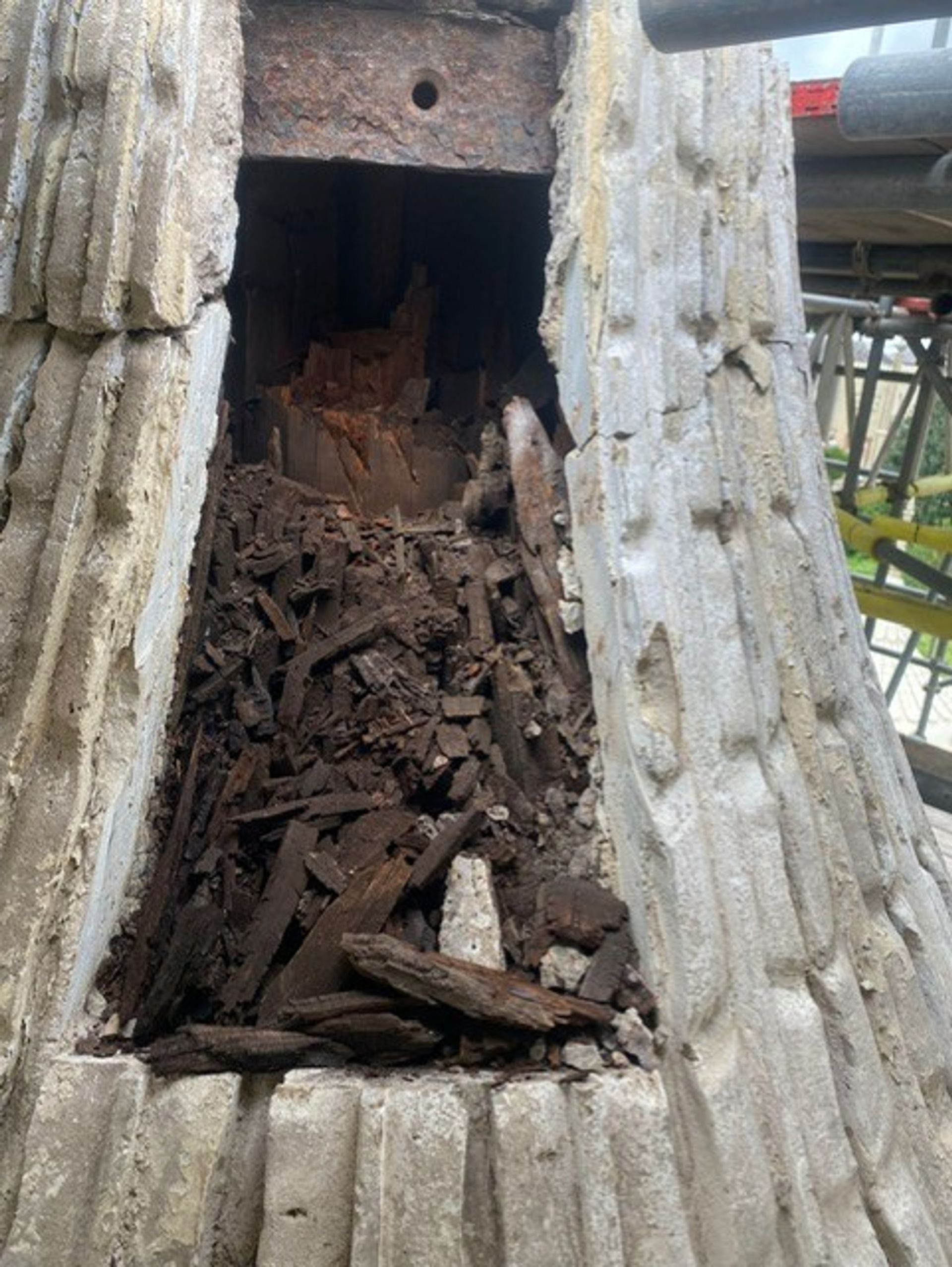An urgent appeal for funds has been launched to restore one of the myriad onion domes that sit atop the roof of Brighton’s Royal Pavilion—a feature of the British seaside city as recognisable as its pier.
In a discovery described as devastating by a team maintaining the former royal residence, one of its smaller domes was found to be decaying to the point of collapse, caused by a leak which led supporting timbers to rot. The team were working through the summer to complete stone repairs and clean the building’s wildly complicated roof structure when they came across the damage, which was only spotted thanks to scaffolding allowing access to the roof.
Jo Hatwell, historic buildings manager at Brighton and Hove Museums—which operates the pavilion—says the organisation was alarmed to discover that an apparently minor crack in the dome had led to such critical damage. “Although we knew there were certain areas of the render that were weaker [and] that we were monitoring, we were alarmed at just how significant the damage was and the extent of the damage on the wood,” she says.

Urgent repairs to the dome are estimated to cost at least £20,000
The appeal is being launched to raise at least half of the cost of urgent repairs to the dome, which will total at least £20,000. This comes at a time when finances at Brighton and Hove Museums are already stretched due to work on the neighbouring Brighton Museum & Art Gallery’s almost equally problematic roof.
“The domes are an iconic feature of John Nash’s work on the Pavilion, and it is devastating that this has happened,” Hatwell continues. “We have to galvanise quickly, but our budgets are currently stretched with the vital work we are carrying out on the Brighton Museum & Gallery roof restoration, so we are appealing for extra assistance to help us fix this small but important dome.”
What are the origins of the Royal Pavillion?
The Brighton pavilion has been a conservation nightmare ever since the early 19th century, when the architect John Nash completed the transformation of a relatively modest classical mansion into a fantasy Oriental palace for the wildly extravagant Prince Regent, the future George IV. David Beevers, keeper of the museum for 40 years, has called it “an opium dream on the south coast”.
Much that looks solid and permanent is anything but, with lath, plaster and render giving an appearance of solid stone. The pavillion’s spectacular roofscape has minarets, turrets, gargoyles, a tented dome, ornate chimneys and the onion domes, which camouflage multiple changing levels and concealed voids impossible to inspect from the ground.
Hadley Swain, chief executive of Brighton and Hove Museums, says the appeal is very necessary for a site where the basic running costs are around £900,000 every year, not counting maintenance and repairs.
“The domes of the Royal Pavilion remain a striking and iconic example of early 19th-century British architecture, showcasing a unique blend of styles that continue to captivate visitors today,” he explains. “Our conservation team work tirelessly to keep on top of the huge amount of maintenance this 200-year-old building requires, but it is difficult to plan for all eventualities, such as the failure of a stone render.
“As a charity, our reserves are limited, especially as we have spent the last few years in recovery following the pandemic. We are calling on support to help us close this gap in funding and restore the dome to its original splendour.”


